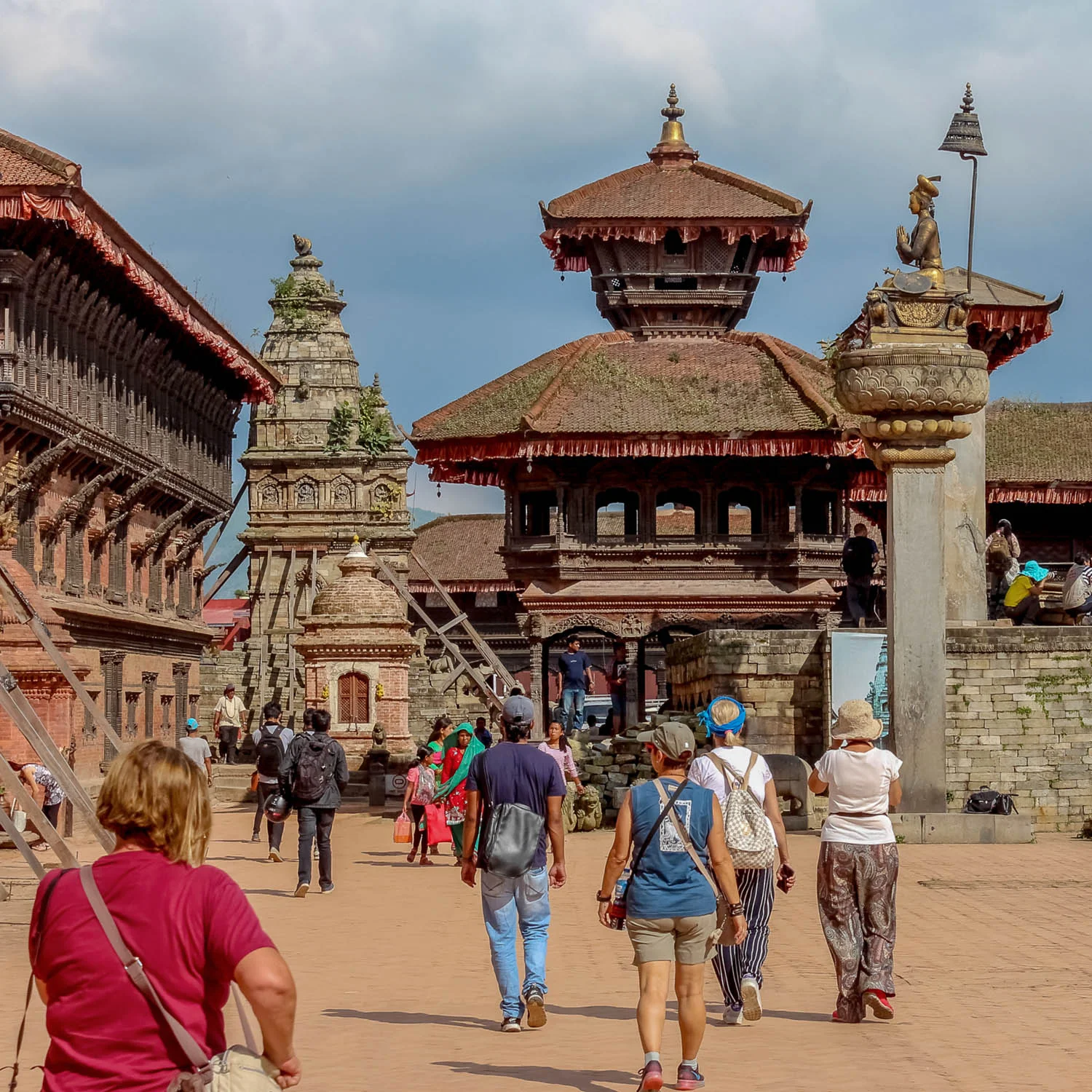Embracing the Changing Face of Kathmandu
Try to imagine a Kathmandu far smaller than the one that greets travellers today. A city less crowded or polluted. A city not long open to the outside world, without a tourism industry or a recognised tourist district.
That was Kathmandu when I first set eyes on it as a young backpacker in 1973. Arriving by bus from India and relying on word of mouth - there were few guidebooks in those days – I headed for the Durbar Square area. Here I found a room in a cheap hotel, and began checking out the many eating places frequented by my fellow travellers in the area.
The square was intoxicating, with its historic palaces and multi-tiered temples, many of them hundreds of years old. And travellers seeking a different kind of buzz had only to head to Jhochhen Tole (better known as Freak Street), a narrow street leading off the square, to find legal hashish and cannabis shops.
There were a few hotels in other parts of the city that attracted top-end visitors, but a proper tourism industry had not yet developed. Durbar Square was the base from which most travellers set off to explore the city, usually on foot.
Nothing lasts forever, though, and later in 1973 the government declared cannabis illegal and closed down the hashish shops. This dented Kathmandu’s reputation as the destination of choice at the end of the hippie trail from the West.
Mainstream tourism was meanwhile starting to grow, and the focus for visitors gradually began to move away from Durbar Square as a place to stay.
It was now that Thamel, a district about 2 kilometres to the north, began to develop as a tourist destination.
Its only hotel at the time was the now famous Kathmandu Guest House, and the district’s transformation didn’t happen overnight. But by the late 1980s, Thamel was attracting a wide range of visitors: backpackers, trekkers, older travellers and mountain climbers, who’d buy climbing gear in its shops.
Today, Thamel is firmly established as Kathmandu’s main tourism district, for senior travellers as well as backpackers. Even people who choose not to stay in one of its many hotels spend time exploring its maze of crowded, winding alleys, checking out its shops and eating in its many restaurants.
Thamel’s appeal increased when vehicles were banned from its central area in 2017. It’s a colourful, vibrant place, full of things to see and do. It’s touristy, yes, but don’t let that put you off.
Its shops offer the widest range of local products in Nepal, from spices to shawls and from tea to tee shirts. Its bookshops are wonderful places to get lost in.
Durbar Square remains as important a drawcard as ever for visitors, of course. The market in the square, which sold fruit and vegetables in 1973, sells tourist souvenirs these days.
Freak Street remains popular among visitors because of its history. Today it is home to shops, restaurants and cafes, and a few inexpensive hotels. But the square is not an area where many travellers choose to stay during their time in Kathmandu.
If there’s a lesson in this, it’s perhaps that some of the changes in Kathmandu since the 1970s have enabled its tourism industry to move with the times, and that travellers should accept the changes rather than hanker for simpler days of old.
Added to this is the fact that tourism is now an important money-spinner for Nepal. In 2018, it attracted more than 1 million visitors for the first time. Tourism accounts for 7.5 percent of the country’s GDP and directly supports more than 400,000 jobs – important figures in a developing country such as Nepal.
Other changes in the city since the 1970s have been even more dramatic.
The population in Kathmandu’s urban area in 1975 was 180,000. In 2019, it’s estimated at more than 1,400,000 – an eightfold growth.
The population of the greater Kathmandu Valley is put at 2.5 million, and is growing at 4 percent a year. Squatter areas have grown rapidly, particularly in the first two decades of the 21st century.
This enormous growth has put heavy pressures on Kathmandu’s infrastructure. It is regularly listed among the world’s most polluted cities. Its air quality continues to worsen. Getting caught in heavy traffic jams is something visitors are used to.
Because of this, many travellers elect to spend just a few days in Kathmandu before heading to other destinations in Nepal: the lakeside city of Pokhara, or resorts in the mountains, or the wildlife-rich national parks in the southern Terai region.
But despite these intrusive reminders of 21st century urban life, Kathmandu continues to charm travellers. Its temples are surely still among the most fascinating in the world, despite the destruction wrought by the 2015 earthquake, which killed almost 9,000 people and destroyed many fine heritage sites.
Even more important, its people are still as kind, patient and friendly as any you’ll meet anywhere. They make Kathmandu what it is. Take time to get to know them and search the city’s hidden corners. Go with the flow and embrace the changes.
Header image: Michael Romanov







